Thursday, November 30, 2006
PET imaging for Carotid Plaque Evaluation
Wednesday, November 29, 2006
My Ice Cream!
Gliomatosis cerebri






Findings
Poorly defined, diffusely increased signal is noted on T2-weighted images (Figure 1) involving predominantly the right frontal and parietal lobes. This abnormal signal involves predominantly the white matter but extends to the adjacent cortex, to the insular cortex and inferiorly involves the thalamus and posterior limb of internal capsule to reach the upper mid brain.
These lesions are iso- to hypo-intense on T1WI (Figure 2). For the size of the lesion, there is not much distortion of the anatomy and there is little mass effect on the ipsilateral lateral ventricle with slight shift of midline to the left.
On the post contrast images (Figures 3, 4 and 5), there are only scattered foci of enhancement in the centrum semiovale and parasagittal gray matter (Figure 3). Foci of enhancement likely represent areas of dedifferentiation.
Figure 6: MR Spectroscopy reveals slight increase in the choline peak and slight reduction of NAA peak.
Diagnosis: Gliomatosis cerebri
Gliomatosis cerebri is an uncommon primary brain tumor characterized by diffuse neoplastic proliferation of astrocytes, with relative preservation of underlying brain architecture and sparing of neurons. By definition, it is infiltrative, involving at least two lobes of the brain, frequently bilateral. Usually WHO Grade III, it is differentiated from multifocal gliomas based on continuity of cellular infiltration and lack of clear distinction from adjacent normal brain tissue.
Patients usually present between the 3rd and 5th decades of life. Clinical findings are nonspecific and characteristically mild in comparison with imaging findings. The process shows a relentless progression over time and typically presents with a slow decline in cognitive function.
The areas infiltrated by neoplastic astrocytes include (in decreasing order of frequency) the cerebral hemispheres, basal ganglia, thalami, corpus callosum, brainstem, spinal cord and cerebellum. The tumor typically crosses the midline and involves at least two, usually three lobes of the brain. Hemispheric white matter involvement is typical, but the cortex may also be involved in approximately 20% of cases.
CT may demonstrate normal findings or may show ill-defined asymmetric low density with minimal or no enhancement. MRI is more sensitive, but also often underestimates the extent of disease. The tumor appears as infiltrating hyperintense mass on T2 WI with enlargement of involved structures. Enhancement may indicate malignant progression or a focus of malignant glioma. Vascular proliferation and necrosis are typically absent.
MRS and dynamic contrast-enhanced T2*-weighted imaging help further characterize the tumor.
Stereotactic biopsy may be guided by an enhancing nodule if present, or by the area of maximum Choline/NAA increase.
The prognosis is generally poor with 50% mortality at one year. Steroid therapy may be helpful in the short term. Radiation therapy and chemotherapy are of questionable benefit.
Monday, November 27, 2006
"Under The Table" Imaging
A Night of Music with Robin Gibb
Some fellow bloggers emailed me if I have more photos of the concert. Actually, I was just lucky to bring a camera in Araneta Coliseum. Cameras are not allowed inside the coliseum and even so on huge concerts as this. People who have brought cameras are asked to deposit them in the luggage stockroom of the security guards.
But I'm lucky, the guard on duty did not fully open my bag, so he did not notice that inside, tucked between a shirt and a towel, is my Nikon D80. Well, I don't have any bad intention and I'm not selling my pictures in the internet. I meant to post them only in my blog.
I was seated in one of the upper seats-the cheaper ones- of the Coliseum. I knew it would be difficult to take good exposures because it was dark inside the coliseum. All the lights were of course aimed at Robin. Good thing that my available camera lens was a medium telephoto, an 85mm f1.8 so I was able to take photos of Robin from a dark corner even far away from the stage.
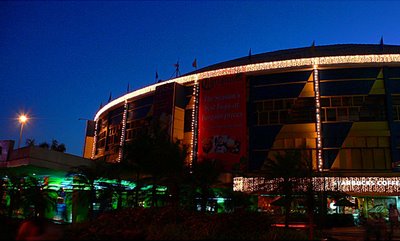 The Araneta Coliseum. Shot prior to my entry for the concert .
The Araneta Coliseum. Shot prior to my entry for the concert .

The full orchetra prepares for the night of music, while
the crowd excitedly waited for Robin Gibb

famous song "Holiday", one of the crowd favorites.
 The big LCD screen is a great benefit for those of us who cannot afford the ringside seats.
The big LCD screen is a great benefit for those of us who cannot afford the ringside seats.
 The audience are dancing and clapping, to the tune of "Tragedy",
The audience are dancing and clapping, to the tune of "Tragedy",
one of the phenomenal hits of the great Bee Gees.
 The encore..Robin Gibb delighted his fans with two encores!
The encore..Robin Gibb delighted his fans with two encores!

The fans reluctantly leave the Coliseum after the last encore.
Everyone was happy and satisfied!

We just hope that Robin returns as he promised, and bring along Barry.
Sunday, November 26, 2006
Radiology Grand Rounds VI Are Up
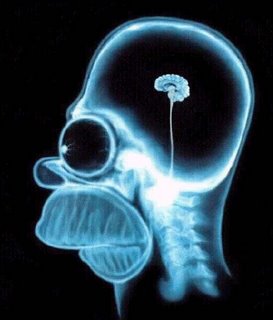 Radiology Grand Rounds VI are finally up at one of the Best Radiology Blogs-
Radiology Grand Rounds VI are finally up at one of the Best Radiology Blogs-Spot Diagnosis
Check it out and enjoy the best in the world of Radiology this month!
Saturday, November 25, 2006
Robin Gibb in Cubao!
Actually I could not afford the ticket, but fortunately my friend Tony Sarreal who works in Araneta Coliseum, gave me a complimentary ticket. Many thanks man, I owe you one!
Although Robin's brother Barry wasn't able to make it to the concert because of tours in other parts of the world, yet it was truly wonderful to see Robin in person, whom I consider one of my most favorite artists.
I am not really very sure about the Bee Gees history, but I think they were originally a five member band that started early in the 1960s. They later narrowed down to three members, brothers Robin, Barry, and Maurice Gibb (who died a few years ago), who popularized the classic songs that everyone loved up to this day, like I Started the Joke, Massachussetts, New York Mining Disaster, To Love Somebody, and countless others.
Indeed, they, more than any other band(with the exception of the Beatles), revolutionized the rock music industry which still influenced a lot of newer rock groups today.
Surprisingly, starting in the late 1970s, the Bee Gees entered the disco music arena with the hugely popular beats Staying Alive, Dance Fever, Tragedy, and countless others, and again, they made significant contributions to the genre. Their influence was far and wide, and in the Philippines, VST and Company was the one they influenced most.
It was a jam packed Araneta Coliseum last night as the crowd was treated to a special night of Bee Gees songs by Robin Gibb. It was great to see that Robin still looked young and lively, and the all-too familiar falsetto nasal voice has not changed, to the delight of the fans. He sang all in all some twenty songs, and that made our night so wonderful!
 The crowd excitedly awaiting Robin Gibb
The crowd excitedly awaiting Robin Gibb Robin singing my favorite song "First of May".
Robin singing my favorite song "First of May".
Wearing a toupe, Robin seemed much younger than his age.
 The audience danced to its feet as Robin sang the hugely popular Stayin' Alive
The audience danced to its feet as Robin sang the hugely popular Stayin' Alive
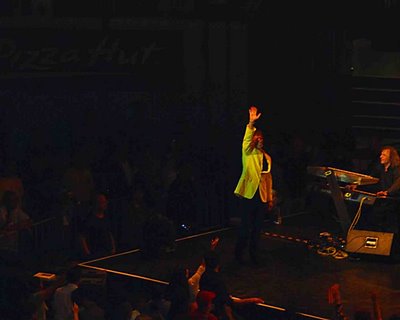 Waving goodbye to his fans, promising that next time, he'd bring along his brother Barry.
Waving goodbye to his fans, promising that next time, he'd bring along his brother Barry.
 The crowd outside the Araneta Coliseum, right after the concert.
The crowd outside the Araneta Coliseum, right after the concert.The taxi drivers made some nice earnings because of Robin.
Friday, November 24, 2006
Posterior reversible encephalopathy syndrome (PRES)
Radiology Job Market
Wednesday, November 22, 2006
Submissions are requested for the Sixth Radiology Grand Rounds
Tuesday, November 21, 2006
Pyriform aperture stenosis


Findings
There is narrowing of the anterior nasal passage (Figure 1 and Figure 2) due to overgrowth of the nasal processes of the maxilla (Figure 1 and Figure 2). The nasal septum appears thinned.
Diagnosis: Pyriform aperture stenosis
Pyriform aperture stenosis is an uncommon cause for nasal obstruction in the newborn period. The patient will typically present with dyspnea or apneic spells during feeding or the inability to pass a nasogastric tube. Clinicians will often suspect choanal atresia as this is a more common cause of these symptoms. The diagnosis is easily made with thin section CT images through the maxillofacial region which will demonstrate narrowing or obliteration of the anterior nasal passage with a normal appearing posterior nasal caliber and choana. A pyriform aperture width of less than 11 millimeters is diagnostic of stenosis.
The differential diagnosis for a child with nasal obstruction should include choanal atresia, choanal stenosis, pyriform aperture stenosis, nasopharyngeal encephalocele, sinonasal polyposis or mucous impaction.
A single frontal megaincisor is sometimes associated with pyriform aperture stenosis and is considered within the spectrum of holoprosencephaly. Therefore, when this finding is noted further imaging of the brain should be performed to rule out holoprosencephaly. The premaxillary portion of the maxilla originates from midline mesodermal tissue. The mesoderm is thought to have an inductive effect on the forebrain, causing this association.
Monday, November 20, 2006
More on CT Radiation concerns
Saturday, November 18, 2006
Sample Shots of the Panasonic Lumix DMC-LX1
There are days when I just feel lazy bringing along my beloved Nikon D80 during my walking tour, even though I want to shoot pictures everyday--just the kind of stuff I usually share with you: everyday sceneries, street people, nightscapes, and the like.
A few months ago, I sold my old reliable Sony DSC-T5, a camera which got me started in photography. Now I really regret having sold it, since I can still use that wonderful camera at times when a dslr is just too tiring to carry around, or is not allowed in a certain place-- like a mall, or a museum.
I really long for a digital compact camera that I can easily carry and not be as obtrusive as a big dslr. So, I decided to just purchase one anew. After all, I always thought that buying photographic equipments is a great investment.
Also, I always save some money because I don't have a vice that I must sustain- like smoking or drinking-and if photography is a vice, then it is a vice that can only be very rewarding, and not cause lung cancer and cirhossis of the liver.
After a little research on the internet, I decided to buy a Panasonic DMC-LX1 Lumix. It is a small digital compact, but it is big in features, like it has a Leica lens, an 8 megapixel sensor, and my favorite feature--an optical image stabilizer.
I read a lot of reviews before buying this camera. Generally, the reviews are great. It is an exceptional digital compact that delivers great images. But there has consistently been one bad issue with the DMC-LX1: Image noise when shooting dark or low light scenes.
I've just written in my previous entry that I love night photography. But then, night images can be easily taken cared of by my D80, so no problem with me about the image noise issue of the Lumix.
So, here then are some sample shots of my new digital compact, the Panasonic Lumix DMC-LX1. These photos are all straight out of the camera. No post-processing done except resizing. All are shot handheld using iso80.
You will notice that the photos are set at wide-angles because the Lumix has a unique parameter feature of 16:9, which appears as if you are viewing the photos from a wide cinema screen. Now isn't that cool!

Gen. Roxas St., Cubao
 The new Eurotel Hotel(or motel?) in Araneta Cubao
The new Eurotel Hotel(or motel?) in Araneta Cubao
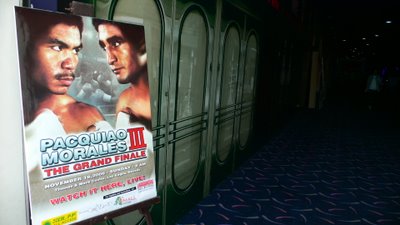
Walkway to the cinema lobby of Gateway Mall where the Pacquiao-Morales III can be watched live. I had an account of the second fight in the January 2006 entry of my blog, where Pacquiao defeated Morales in the final round. This time around, though, Pacquaio simply demolished Morales in the third. I paid the 600 pesos ticket to watch it live. It was worth it.
 The cinema lobby of the new Gateway Mall. The domed ceiling remind me of the majestic domed ceiling of the ill-fated Titanic.
The cinema lobby of the new Gateway Mall. The domed ceiling remind me of the majestic domed ceiling of the ill-fated Titanic.

My favorite tambayan in the old Ali mall is of course National Bookstore. Syempre..laking National ako eh.

Fruit stand in the Farmers Market where I usually buy my favorite Durian, Lanzones, and Mangosteen fruits.
 The new Gateway Mall at dusk. Around 5 o'clock in the afternoon. As you can see, night time is now longer and daytime shorter.
The new Gateway Mall at dusk. Around 5 o'clock in the afternoon. As you can see, night time is now longer and daytime shorter.
 The giant Christmas Tree of Cubao..Ah..I'm very proud and fortunate to be a Cubao citizen!
The giant Christmas Tree of Cubao..Ah..I'm very proud and fortunate to be a Cubao citizen!
My personal assesment of the Panasonic Lumix DMC-LX1: I will not say much....I love this camera!
Wednesday, November 15, 2006
Low Light Test of Nikon D80
I have a new camera-a Nikon D80- so last night I decided to take it to Cubao to shoot some night sceneries.
Here are some photos I've taken with my favorite Sigma 14mm 2.8 lens. All these photos were shot handheld at iso 800 at the maximum lens aperture of 2.8. All shots were unprocessed except for some minor tweaks in highligthing and cropping.
 Dusk at Edsa Cubao. Shot from the Cubao Overpass. I placed my Nikon on the railing of the camera so I was able to make a 2 second exposure.
Dusk at Edsa Cubao. Shot from the Cubao Overpass. I placed my Nikon on the railing of the camera so I was able to make a 2 second exposure. The colored trees of Cubao
The colored trees of Cubao Shopwise Supermarket
Shopwise Supermarket
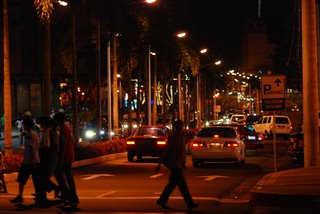
Near Romulo St., Cubao
 The old Ali Mall, the mall of the great boxing champ Muhammad Ali
The old Ali Mall, the mall of the great boxing champ Muhammad Ali The new Gateway Mall
The new Gateway Mall
 A busy street in Cubao
A busy street in Cubao

Jeepney terminal in Farmer's.
My Personal Verdict: Excellent performance of the D80 even in low-light situations. At iso800, the D80 still delivers clean image, even with the noise reduction feature off. I am very pleased with the results and I think that this camera will be my permanent camera....as of now :)
Monday, November 13, 2006
More on Gadolinium adverse effects
Progressive Multifocal Leukoencephalopathy (PML)







Findings
MRI shows multiple foci of hypointensity on T1 and hyperintensity on T2 and FLAIR throughout the subcortical white matter of bilateral frontal, temporal and parietal lobes. Similar lesions are seen in left pons and right cerebellar hemisphere. Figure 2 and 3, which are FLAIR images, demonstrate well the involvement of the subcortical U-fibers. There is no significant mass effect associated with these lesions. No appreciable enhancement is seen on postcontrast images (Figure 4, Figure 5, Figure 6, and Figure 7).
Diagnosis: Progressive Multifocal Leukoencephalopathy (PML)
Progressive Multifocal Leukoencephalopathy (PML) is a fulminating opportunistic infection of the brain caused by JC virus. The virus is commonly latent in the central nervous system (up to 80% of adult population is infected) but targets the oligodendrocytes in immune compromised patients. It occurs in AIDS patients with very low (less than 50-100) CD4 counts.
PML typically results in progressive neurologic decline in AIDS patients, but can be the presenting illness.
The need to diagnose and treat PML is urgent in patients with HIV as the infections are synergistic. Brain biopsy was previously required for definitive diagnosis. With positive JCV Polymerase Chain Reaction CSF results and MR findings characteristic of PML, brain biopsy can be avoided in many AIDS patients.
On CT, it presents as focal, bilateral, asymmetric, usually well-demarcated areas of low attenuation, typically in the subcortical and periventricular white matter.
MRI reveals asymmetric, multifocal areas of T1 and T2 prolongation in the periventricular and /or subcortical white matter. Involvement of subcortical U-fibers is common, giving a “scalloped” appearance to the lateral margins of the lesions. Classically, the lesions occur in the parieto-occipital white matter. However, lesions may involve any part of cerebral hemispheres as well as brainstem, cerebellum, and basal ganglia. Mass effect and enhancement are usually absent or mild, if present. Marked mass effect or robust contrast enhancement should suggest alternative diagnoses.
HIV encephalitis is the leading diagnostic possibility in the differential diagnosis of non- enhancing, non-mass-producing white matter lesions in patients with AIDS. White matter changes in HIV encephalitis are usually symmetrical and diffuse. Posterior fossa is also uncommonly involved with HIV encephalitis.
There is no specific therapy for PML, and it was previously considered to be fatal with median survival being around four months. Improved patient survival has been reported with HAART (highly active antiretroviral therapy).
Friday, November 10, 2006
Doctor Google!
Thursday, November 9, 2006
Cavernous hemangioma







Findings
Figure 1 and Figure 5: T1 axial and coronal images demonstrate the soft tissue mass iso-intense to the adjacent muscles located predominantly in the extraconal plane with minimal intraconal extension.
Figure 2: T1 coronal post contrast with fat saturation demonstrates enhancement of the cavernous hemangioma.
Figure 4: T1 axial postcontrast image demonstrates peripheral hypointense margin from pseudocapsule (arrow at the site of pseudocapsule).
Figure 3: T2 coronal images demonstrating thin septa within the cavernous hemangioma.
Figure 6: Catheter angiogram in arterial phase does not show any feeding arteries.
Figure 7: Catheter angiogram delayed phase shows pooling of the contrast within the cavernous hemangioma.
Diagnosis: Cavernous Hemangioma
Cavernous hemangioma is the most common congenital vascular malformation of the orbit. Female predominance is appreciated with female to male ratio as high as 7:3. Hormonal factors have been implicated as there is more rapid growth during pregnancy. They grow slowly and are composed of multiple endothelial and smooth muscle lined vascular channels. Cavernous hemangiomas are well circumscribed round or oval lesions with well defined margins. They have a pseudo capsule from the surrounding compressed tissue.
The common clinical presentation is painless proptosis. Diplopia, visual impairment, increased intraocular pressure are seen with larger lesions.
Cavernous hemangiomas are more often intraconal. Larger lesions have extraconal extension. Primary extraconal lesions are also reported. Intraosseous hemangiomas are rare.
CT demonstrates the location of the lesion and micro calcifications. Phleboliths and macroscopic calcifications are rare. Remodeling of the bone is seen in long-standing cases. On MRI homogeneous soft tissue mass, which is isointense to the muscle on T1WI and hyperintense on T2WI with well-defined septations, can be seen especially in large lesions. Hypointense pseudo capsule is very visible along the periphery of the lesion.
Heterogeneous patchy enhancement is seen with contrast with more homogeneous enhancement on delayed imaging. Angiography demonstrates no obvious distinct tumor blush during the arterial phase. Contrast puddling is seen, which extends to the late venous phase, essentially isolated from systemic circulation.
Treatment options include observation only for stable lesions and lesions without significant symptoms. Intralesional laser, cryosurgical and radio surgical techniques are other alternatives in addition to surgery. Surgical resection is indicated for visual disturbance, cosmetic reason, and any symptoms related to mass effect. Recurrence rate is very low after surgery.
